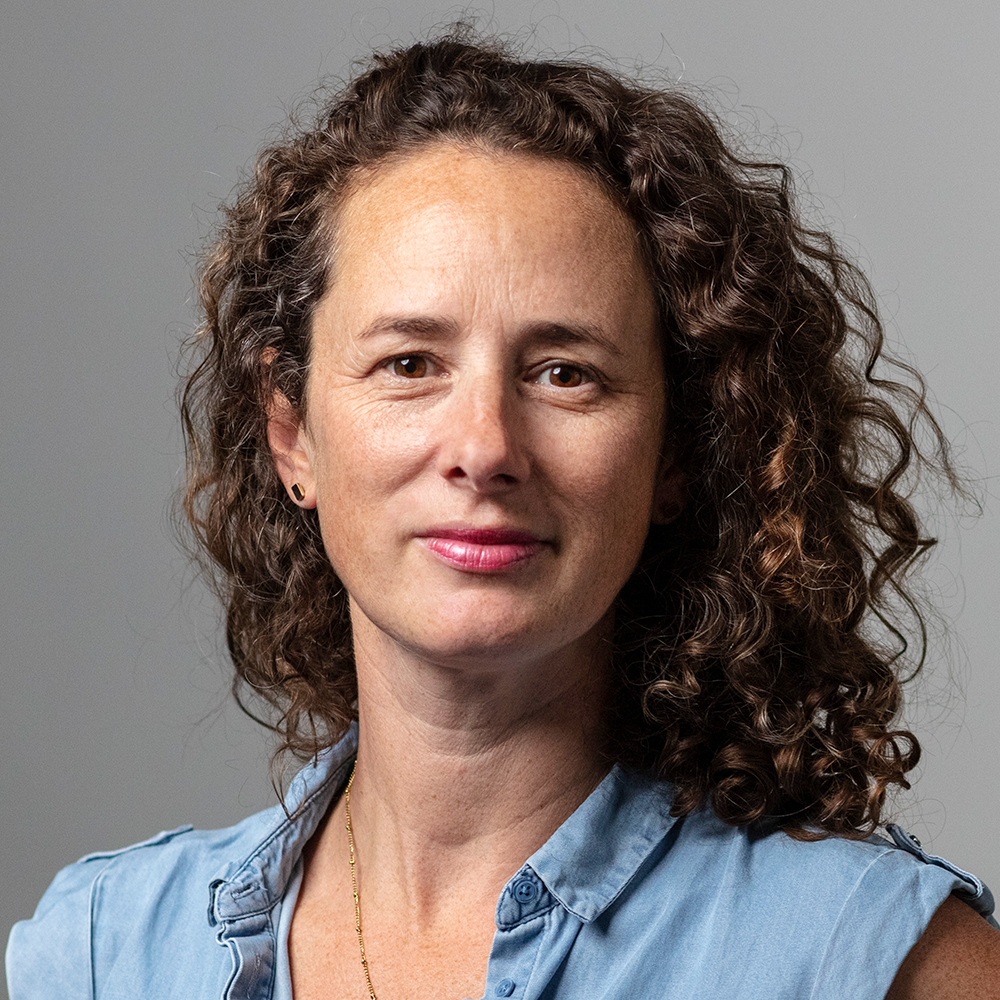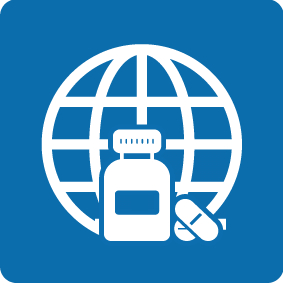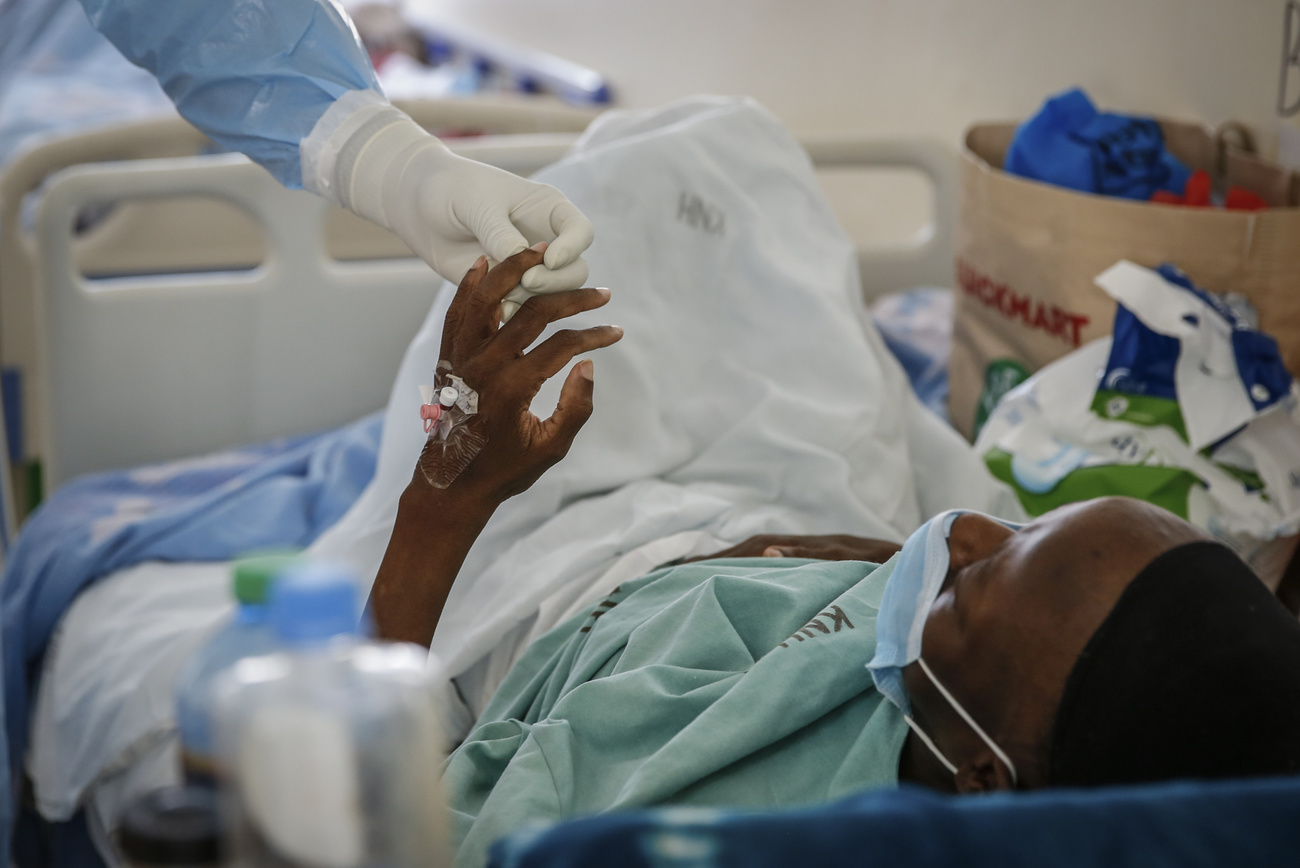
Swiss firm Novartis has taken the top spot in the Access to Medicine Index for the first time, but progress by the pharmaceutical industry as a whole in making medicine available in the poorest countries has been sluggish since the end of the Covid-19 pandemic.
Novartis edged out UK-based firm GSK, which has held the top spot since 2008, when the index was first published. Novartis moved up from fourth place in the previous index in 2022. The other Swiss company in the index, Roche, dropped one spot to 11th.
Despite “modest progress” by the world’s largest companies, the Netherlands-based non-profit Access to Medicine FoundationExternal link, which compiles the biennial index of drug companies, warned that the pace of progress falls far short of what is needed to address global health inequities.
Nearly two billion people globally have no access to essential medicines, according to a World Health Organization (WHO) reportExternal link from 2019. This is largely because medicine is not affordable, available or adapted to the needs of low-income countries.
“More companies have announced business models to expand the reach of their medicine to more people in the poorest countries,” Jayasree Iyer, CEO of the foundation, told SWI swissinfo.ch. “But we’d expect the progress to be much greater at this point.”
For 15 years the Access to Medicine Index has evaluated efforts by the 20 leading pharmaceutical companies to expand access to their products for people living in low- and middle-income countries.
The 2024 scorecard comes a year after the WHO declared the end of the Covid-19 public health emergency. In the meantime, public pressure on vaccine equity and for companies to loosen their grip on patents for new medicine has waned.
Voluntary licences
Pharmaceutical companies issued only two new voluntary licences to generic manufacturers in the period of analysis for the 2024 index. This is compared to six new licences in the years leading up to the 2022 index. Novartis is the only company that granted a voluntary licence for a cancer drug.
By granting voluntary licences, companies allow generic drug companies to manufacture a drug before its patent has expired, effectively bringing down the price. Pharmaceutical companies have pushed back on such licences, arguing that it threatens their price premium. However, a studyExternal link published in April found that voluntary licencing can actually increase revenues for both innovator and generic companies by up to 17%.
The slowdown in licencing activities, which have now reverted to a level last seen prior to the Covid-19 pandemic, indicated a “concerning loss in the momentum gained over the last few years”, states the index.
More
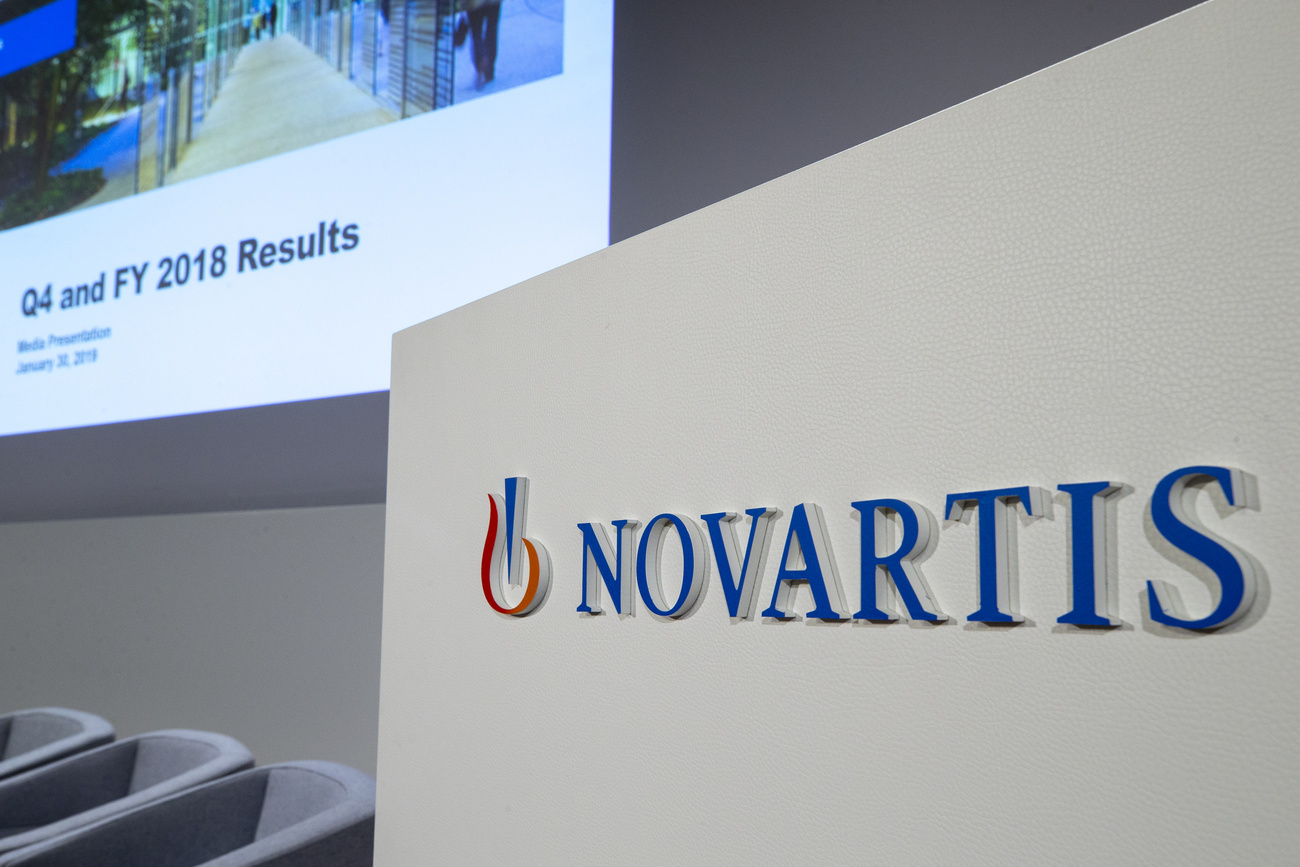
More
Novartis seals deal to license high-priced cancer drug
Another worrying trend, notes the index, is dwindling investment in diseases that are a key priority for low-income countries, such as malaria and tuberculosis. Only 93 research and development projects in these diseases were added to the pipeline by the 20 companies in the last two years, compared to 151 in the previous index.
Roche has recommitted to investing in new antibiotics, which are desperately needed. But only 13 of its 76 research and development (R&D) projects in the scope of the index target priority diseases, including hepatitis B, coronaviral diseases, and antibacterial-resistant infections.
Last year, Johnson & Johnson became the latest company to exit infectious disease and vaccine development programmes after double-digit revenue losses. Companies such as Roche and Novartis have shifted R&D investment into more lucrative disease areas such as obesity and cancer.
“Unless corporations invest serious money, there is a real risk that diseases such as dengue, tuberculosis, and particularly the neglected tropical diseases will remain undertreated for a long time to come,” said Sabastine Wakdok, who heads research at the non-profit organisation Impact Global Health in the UK.
Getting the CEO on board
There are some bright spots in the index though. Despite less investment in some disease areas, companies are making global access a greater priority across their existing products and pipeline.
The index has been encouraging companies over the years to go beyond donations and charity programmes. Although donating medicine can fill temporary gaps and is necessary in emergency situations, the Foundation argues it doesn’t have the same sustained, long-term impact of integrating global access into the business model.
More

More
Roche’s big bet on big diseases
Some 96% of Novartis’s late-stage drug development projects have access plans around them. The CEO’s compensation is tied to reaching more patients, and it was also the first company to launch a sustainability-linked bond with access to medicine targets.
Roche, on the other hand, has more late-stage pipeline projects than Novartis but only a third of them have access plans. In a response to SWI, a Roche spokesperson said that the company largely sells innovative medicine for chronic diseases, which “require specialised care pathways and medical infrastructure which are not always in place in every country”.
Iyer argues that companies should already think about access in the research and development stage. “If companies don’t plan early, they will really struggle to make their drugs available,” she said. “They will end up investing a lot of money later on.” Pharmaceutical companies typically prioritise market access in countries where clinical trials are conducted but only 3.5% of clinical trials take place in low-income countries.
Novartis is also one of five companies that have introduced so-called inclusive business models. In 2019, Novartis created separate “emerging market brands”, which are cheaper versions of their drugs for some 44 countries in sub-Saharan Africa. Novo Nordisk, Pfizer, Sanofi and Bristol Myers Squibb have all followed suit with pricing strategies or separate brands tailored to low-income countries for a select group of products.
More
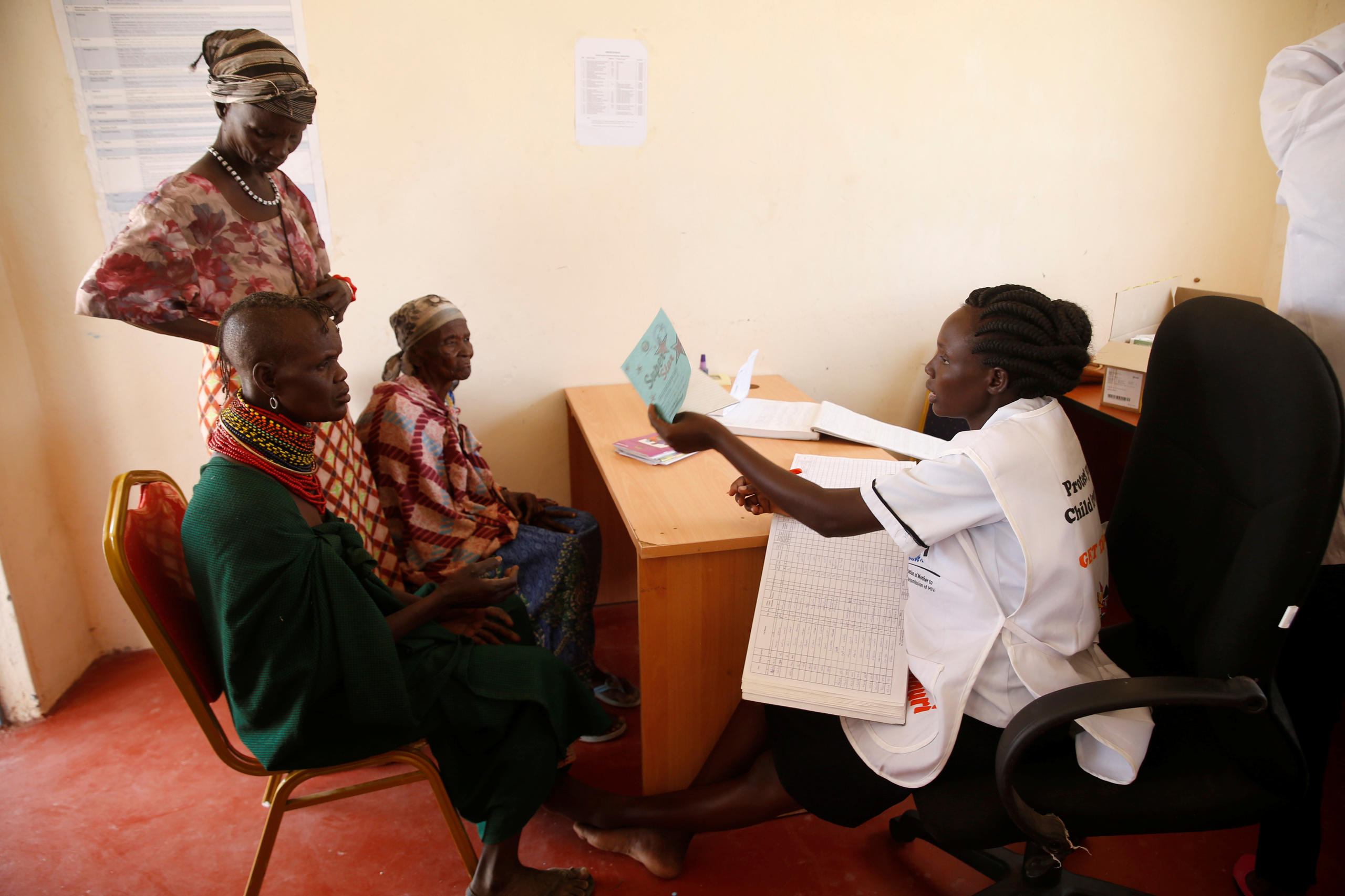
More
Can Novartis really make its medicines available to everyone?
Novartis’s access plans also don’t seem to have been affected by the sell-off of its generic business, Sandoz, last year. According to Iyer, Novartis has maintained relationships with Sandoz to continue providing both older generics and newer medicine in sub-Saharan Africa.
What’s the impact?
How much impact these models have had is difficult to know, said Iyer. The 2024 index includes, for the first time, a more rigorous look at how companies actually measure and report their impact in terms of the number of patients reached and health outcomes. This has led to an overall decrease in the performance of companies.
Some 19 of the 20 companies share their approaches to track the patients they reach with their essential medicines in countries, with the exception of AbbVie. However, there is no consensus on how to calculate the number of patients reached, and only 17 report actual numbers.
Companies often use sales volume as a proxy for patient reach, and few provide context on the eligible patient population. Sanofi is the only company, so far, to clearly report on how many patients are specifically being reached with the products delivered via its model.
There are also huge gaps in transparency. The index points out that Novartis offers limited public information on where the products included in their model are available and how many patients the model has reached. Novartis launched a second cheaper brand for its product sacubitril/valsartan (Entresto), indicated for chronic heart failure, but, the Index notes, it is only available in one low-income country.
More
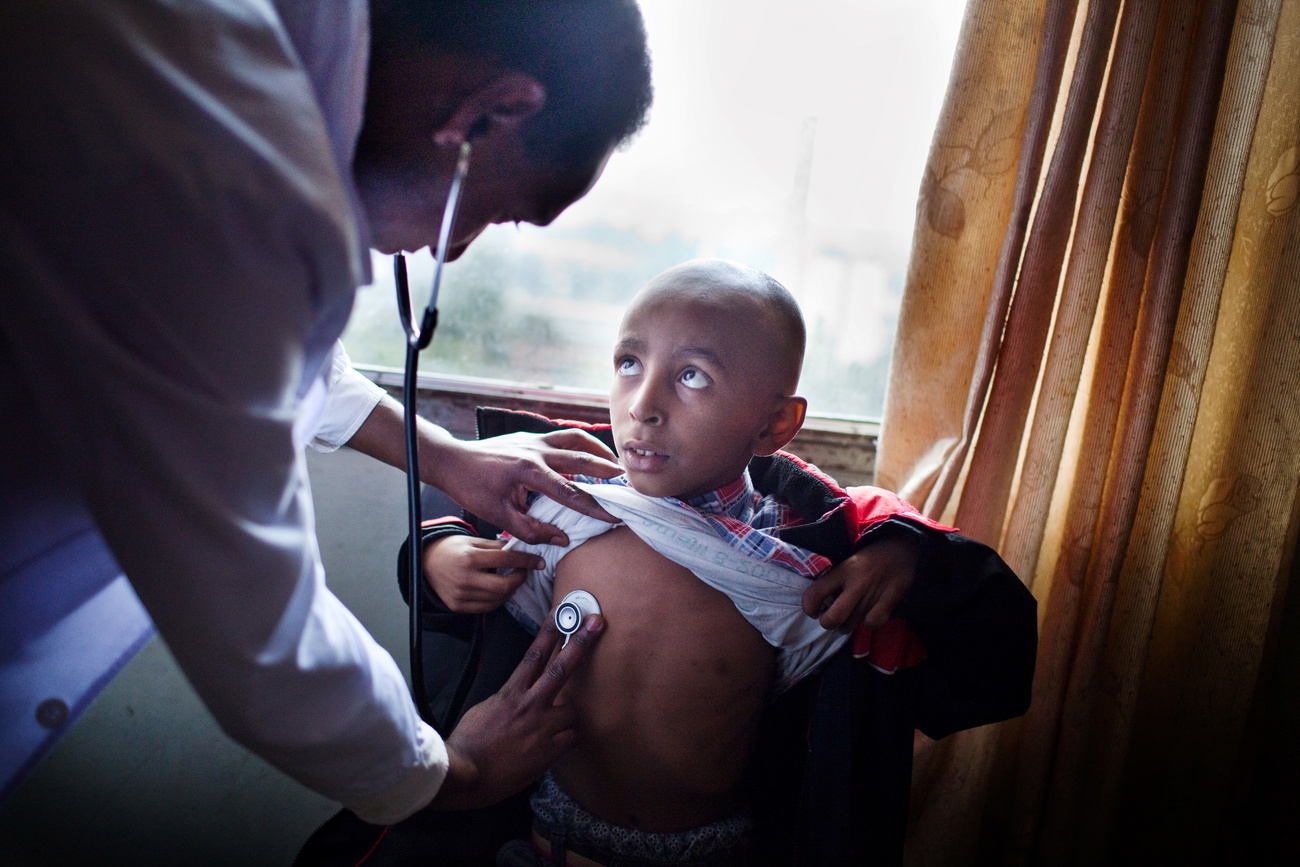
More
The end of affordable medicine
Roche has set a goal to double the number of patients being treated with its innovative therapies in low- and lower-middle-income countries by the end of 2026, and shares progress annually. However, it doesn’t provide a breakdown by product or region.
The index states that patient reach figures that have been reported by companies still fall short of meeting a realistic percentage of the world’s healthcare needs. Almost half of products analysed aren’t even registered in countries with the highest disease burden.
“Most of the industry is still focused on the US market for driving access in the rest of the world,” said Iyer. “It’s a problem that we, as society, are reliant on the US market and government funding to drive access, and investments in areas that the industry doesn’t make money from.”
Edited by Reto Gysi von Wartburg/ts
Full story here Are you the author? Previous post See more for Next postTags: Featured,newsletter









